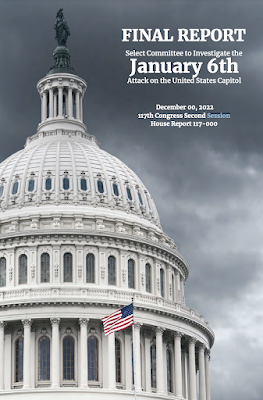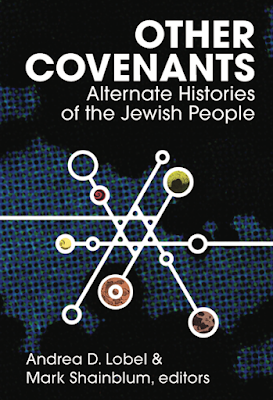More Capitol Counterfactuals: "What Ifs" in the Final January 6th Committee Report
The Final Report of the Select Committee to Investigate the January 6th Attack on the United States Capitol is full of counterfactual claims that nicely illustrate the utility of counterfactual history.
As I have repeatedly noted, counterfactuals help us understanding history in terms of causality, morality, and memory.
Consider the main takeaway from the foreword of the Final Report. The executive summary unambiguously declares the following:
“In the Committee’s hearings, we presented evidence of what ultimately became a multi-part plan to overturn the 2020 Presidential election. That evidence has led to an overriding and straight forward conclusion: the central cause of January 6th was one man, former President Donald Trump, whom many others followed. None of the events of January 6th would have happened without him.”
Whether or not historians will later place so much emphasis on “one man” – after all, they will surely want to address Trump’s many enablers and henchmen – one cannot imagine a clearer causal claim. Note, however, that the causal claim is framed counterfactually: “None of the events of January 6th would have happened without him” instead of, say, “The events of January 6th were the direct result of Donald Trump’s actions.”
Why does the Report frame the causal claim in this way? Because the counterfactual framing isolates the cause by imagining its ABSENCE preventing the event from occurring.
This is something that David Hume realized in the 18th century. In 1748, Hume explicitly employed counterfactual reasoning in presenting his theory of causality, writing that “we define a cause to be an object followed by another, and where all the objects, similar to the first, are followed by objects similar to the second. Or, in other words, where, if the first object had not been, the second never had existed.”
As various scholars have argued, Hume initially limited his definition of causality to the first clause of the passage, thereby limiting causality to correlation -- that is to say, the regularity of succession. Yet, nearly a decade later, convinced that the definition did not suffice, he added the second clause, which he believed profitably supplemented the incomplete initial definition. As Judea Pearl has argued, it was important that Hume viewed the statement, “B would be false if not for A” as “an explication of “A caused B,” because it revealed we can “discern the truth of the former with greater certitude than that of the latter.”
There were many causes of January 6th – some long-term, others short-term. Some would say the event was overdetermined. But employing the counterfactual and imagining the consequences of subtracting Trump from the equation makes it clear that the event would not have happened.
There are other counterfactuals in the Report, many of which are classic “close call counterfactuals” that underscore the nightmares that almost came to pass.
Consider this observation:
“Trump’s mob came dangerously close to succeeding. Courageous law enforcement officers put their lives on the line for hours while Trump sat in the White House, refusing to tell the rioters to go home, while watching the assault on our republic unfold live on television. When it was clear the insurrection would fail, Trump finally called off the mob, telling them, “We love you.” Afterward, Congress was able to return to this Capitol Building and finish the job of counting the Electoral College votes and certifying the election. This is the key conclusion of the Select Committee, all nine of us, Republicans and Democrats alike.” “But who knows what would have happened if Trump’s mob had succeeded in stopping us from doing our job? Who knows what sort of constitutional grey zone our country would have slid into? Who would have been left to correct that wrong?”
And this observation:
“As you read this report, please consider this: Vice President Pence, along with many of the appointed officials who surrounded Donald Trump, worked to defeat many of the worst parts of Trump’s plan to overturn the election. This was not a certainty. It is comforting to assume that the institutions of our Republic will always withstand those who try to defeat our Constitution from within. But our institutions are only strong when those who hold office are faithful to our Constitution. We do not know what would have happened if the leadership of the Department of Justice declared, as Donald Trump requested, that the election was “corrupt,” if Jeff Clark’s letters to State Legislatures had been sent, if Pat Cipollone, Jeff Rosen, Richard Donoghue, Steve Engel, and others were not serving as guardrails on Donald Trump’s abuses.”
Finally, there is this nightmare:
“Hundreds of Capitol and DC Metropolitan police officers performedtheir duties bravely on January 6th, and America owes those individuals immense gratitude for their courage in the defense of Congress and our Constitution. Without their bravery, January 6th would have been far worse.”
All of these comments illustrate the analytical and rhetorical power of counterfactual history.
Perhaps someone should write a book tracing the history of this magnificent, but long under-appreciated, field.



Comments